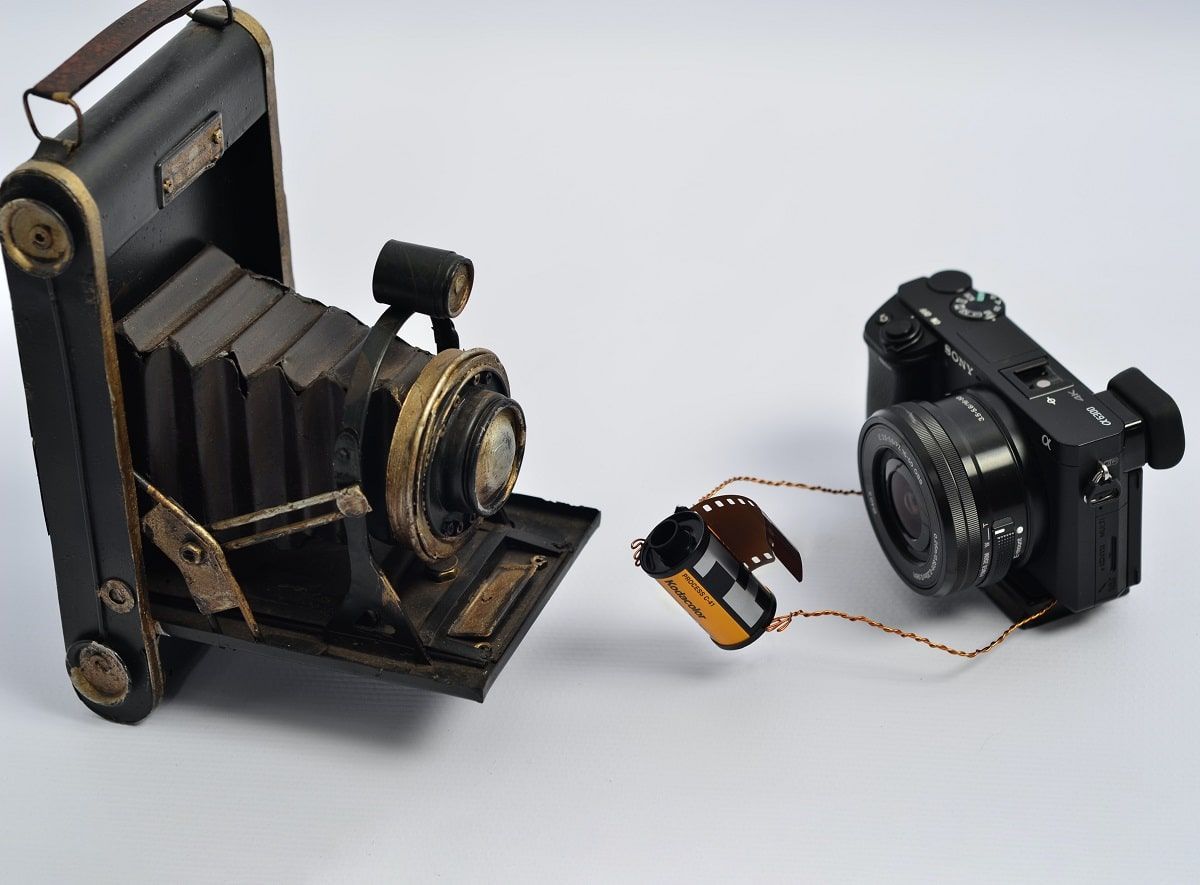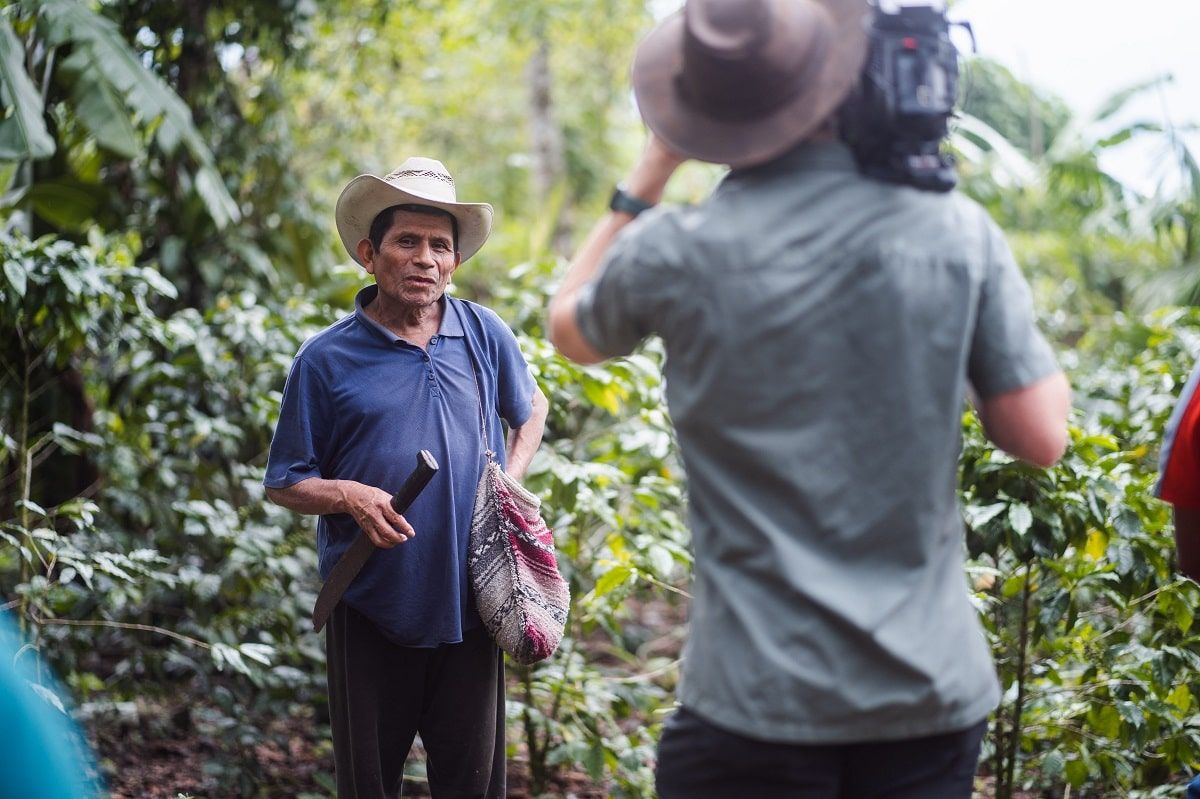Top 15 Famous Documentary Filmmakers of All Time
Rent film gear from local filmmakers.

Rent film gear from local filmmakers.
Movies have always been a great medium for storytelling and passing on knowledge.
The documentary genre mainly focuses on enlightening the audience of different subjects. It has grown into a tool to provide a critical view of certain events.
In this article, we have compiled the 15 best documentary filmmakers to appear on the big screen.
If you want to get into making documentaries, check out our guide on Documentary Filmmaking here.
1. Michael Moore
Michael Moore is a documentary filmmaker who typically focuses on themes like globalisation and capitalism.
His first film was Roger & Me, which portrays the economic impact on the local population of flint after the closing of General Motors auto plants.
He also created the documentary Bowling for Columbine. In the movie, he explores and tries to find the reasons for the Columbine school shooting in 1999. It also tries to explore and criticise the gun culture in the USA.
His documentary Fahrenheit 9/11 explores the Bush administration, the Iraq war and media coverage.
What is common for all of Michael Moore's documentaries is his critical and aggressive style. He is never afraid of asking hard-hitting questions and is always in search of the truth.
2. Alex Gibney
Alex Gibney is an Emmy-winning documentary filmmaker. Esquire Magazine called him one of "the most important documentarians of our time".
His documentary typically follows people in power and the, usually unethical, paths they took to get there.
He is most well-known for having created the documentary The Inventor: Out for Blood in Silicon Valley. It follows the story of Elizabeth Holmes and her company Theranos, built on the back of fraudulent blood tests.
In 2005 he released the documentary film Enron: The Smartest Guys in the Room. It follows the story of the Enron company and the malpractice they performed to cheat millions out of their customers.
3. Claude Lanzmann
Claude was a French filmmaker who created documentaries based around WW2 and the aftermath from a Jewish perspective. He became a part of the french resistance in 1942 after his family had fled from Eastern Europe to France.
While he has created many documentary films, his most famous one is Shoah, released in 1985.
The epic 9 1/2 hour documentary tells the story of the holocaust without using any archive footage. In the film, he interviews survivors, witnesses, historians, resistance fighters and ex-nazis.
The film is legendary documentation of the horrors of the holocaust and a significant piece of 20th-century history.
4. Dziga Vertov
Dziga Vertov was a Russian filmmaker and a pioneer in the filmmaking world.
He is most known for having invented several cinematic techniques such as slow-motion, freeze frames, jump cuts and split screens. These techniques were first put in use in the 1929 documentary Man with a Movie Camera.
The movie features life in Soviet Russia, in the cities of Moscow, Kyiv and Odesa. It shows the industrial life of the people, who are the subjects of the documentary.
It was heavily criticised upon its release and dismissed by the general public. However, many now consider it as one of the best and most important movies ever made.

5. Charles Ferguson
Charles Ferguson is an Oscar-winning director. He started his career as a software company founder and sold his company to Microsoft in 1996.
In 2005 he began directing and producing his first film, No End in Sight. The film focuses on post-war Iraq. More specifically, it focused on the Bush administration's handling of the Iraq War and the occupation of Iraq.
He also made the documentary Inside Job about the final crisis in 2007. It netted him an Academy Award for Best Documentary Screenplay in 2010.
Charles endurance in his pursuit for the truth is what makes him such a great documentary filmmaker. He only has four documentaries to his credit, but that is to no one's surprise, considering the extensive research that goes into them.
6. Michael Apted CMG
Michael Apted CMG was an English film director and documentary filmmaker. His film and TV work count titles such as Rome and The World Is Not Enough.
He is most known for creating the Up series featuring 14 English people filmed during their life. It started when they were seven years old and continued for eight more episodes every seven years, ending at 63.
He also created some music documentaries, focusing on artists like Sting and Boris Grebenshchikov.
He changed focus in 1994 with his documentary Moving the Mountain, which followed the story of the Tiananmen Square protests in 1989.
7. Asif Kapadia
Asif Kapadia is an award-winning British director. He has won an Oscar, several BAFTA awards and a Grammy.
His most well-known work is his trilogy of documentary films Senna, Amy & Diego Maradona. They're all narrative-driven, using a ton of archive footage, some never seen before.
Senna follows the story of the Brazilian F1 driver Ayrton Senna, exploring his successful career and his untimely death.
Amy follows the story of Amy Winehouse and features archival footage as well as interviews with different people. It is an intimate portrait of her life and career, which, like Ayrton Senna, ended in an untimely death.
Diego Maradona follows the story of, well, the legendary football player.
It is the only one of his three documentaries in which the subject wasn't dead at the time of release. Diego Maradona sadly passed away in 2020.
8. Steve James
Steve James is most known for having made Hoop Dreams. Many consider it to be one of the best documentaries of all time. Hoop Dreams follow the story of two African-American high school students and their dream of playing in the NBA. Many consider it a cultural timepiece and a realistic look at American life.
He also created the documentary Stevie, where he reconnects with Stevie Fielding, whom he used to tutor. Stevie's life has since the tutoring taken a turn for the worse.
He also made Abacus: Small Enough to Jail which focuses on the story of Abacus Federal Savings Bank, the only bank that faced criminal charges after the 2007 financial crisis.

9. Kirby Dick
Kirby Dick is a director, producer, editor and screenwriter, and has gotten several academy award nominations for his work.
Kirby Dick works to put light on injustices in the world, focusing on helpless subjects with nowhere else to go.
He made the documentary Twist of Faith in 2004. It follows a man confronting the Catholic Church and the abuse he suffered when he was a kid.
He also directed The Invisible War, which focuses on sexual assault in the American Army. With the ever-growing number of women in the Army, the people in power are taking advantage of their subordinates.
The documentary tries to expose the disgusting culture and mistreatment of women in the military. It also focuses on the tedious process and consequences of reporting these offences.
10. Joshua Oppenheimer
Joshua Oppenheimer is a British filmmaker based in Copenhagen. He has received Oscar nominations for several of his films.
His documentary The Act of Killing from 2012 focuses on participants of the mass killings in Indonesia in 1965 and 1966. It has interviews with both victims, as well as the perpetrators of the killings. In the film, he makes the murderers re-enact the killings.
His "follow-up" film, The Look of Silence, also looks at the mass killings in Indonesia. Werner Herzog is an executive producer on both movies. It follows the brother of a man murdered in 1965. It features him watching the footage of the killers, as well as confronting them.
11. Joe Berlinger
Joe Berlinger has been nominated for several Emmy's and even won two for his work. He was also nominated for an Oscar for his Paradise Lost 3 documentary.
His documentaries typically follow true crime stories and social justice issues.
His most well-known documentary is Paradise Lost which he followed up with two more movies. Paradise Lost follows the trials of the West Memphis Three, which were three teenagers accused of murdering and mutilating the bodies of three boys. The accusation claimed that it was a part of a satanic ritual.
He also made the documentary Brother's Keeper together with filmmaker Bruce Sinofsky. The film focuses on a murder that happened in a small village in the state of New York. It focuses partly on the contrast between the small town and city folk and the news media coverage of the murder.
12. Adam Curtis
Adam Curtis is an English filmmaker who has produced countless documentaries for the BBC.
His documentaries typically look at the rise and fall of people in power during history and their attempts to change the ideological beliefs of their followers.
His 2004 three-part documentary series The Power of Nightmares investigates the rise of politics of fear that especially surfaced after the 9/11 attacks.
His signature style is making collage-style documentary films. He likes to explore sociology, political history, philosophy and psychology. One of his inspirations is the sociologist Max Weber.

13. Amy Berg
Amy Berg is another Oscar-nominated filmmaker who is most known for her 2006 documentary Deliver Us from Evil.
Deliver Us from Evil focuses on the story of the Irish Catholic priest Oliver O'Grady, who admitted to having molested approximately 25 kids in Northern California in 20 years. In the movie, she interviewed the priest, who had moved to Ireland after serving only seven years in prison for his crimes.
Her 2015 documentary Janis follows the life and career of the musician Janis Joplin. It makes a complete picture of her journey into stardom. It features letters that she wrote to friends, families and colleagues over the years.
Like Joe Berlinger, she also made a documentary of the West Memphis Three, called West of Memphis.
14. Janus Metz
Janus Metz Nielsen is a Danish filmmaker who is most known for making the documentary Armadillo. The documentary follows the daily lives of Danish soldiers in Afghanistan for six months in 2009.
It is one of the tensest documentaries made, where the crew gets close to individual soldiers. They explore the personal lives of the soldiers and follows them on patrols. During the film, the cameraman gets right up in the middle of the action.
He also created the documentary Heartbound in 2018, which follows the trend of Thai women being married to Danish men, and how it all started.
15. Frederick Wiseman
Frederick Wiseman has been making films for more than 40 years. Frederick is what you could call a filmmaking anthropologist, creating documentaries that focus primarily on the daily lives of a variety of people.
His documentary Ex Libris provides a look within the New York Public Library.
City Hall follows Boston's city government and focuses on the issues of racial justice, social housing and climate issues.
Titicut Follies is a 1967 documentary that takes a look inside the Massachusetts Correctional Institution Bridgewater and explores the state and life of the prisoners inside.
Closing thoughts
Hopefully, this list inspired for your next film night, although I would probably not watch too many in a row.
I mean, this is some hard-hitting subject matter after all!
If you were inspired to take up documentary filmmaking yourself, then don't let the big investments of film production scare you.
With nothing but a camera in a hand, you could create a documentary yourself. With Wedio, you can simply rent or subscribe to a camera, without breaking the bank!
If you want to learn the basics of filmmaking before starting your journey, then check out our article on Filmmaking 101.
About the instructor
Matt Harris
Producer, Filmmaker
United Kingdom
Matt Harris is a UK based award-winning DOP, producer, and director specialising in high end documentary and branded content.























